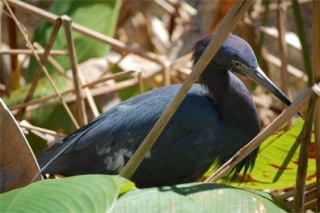Ellen Underwood
Executive Editor
eGreenboard.com
(BLACK PR WIRE) – The Everglades is one of the most prized ecosystems on Earth. It provides a home for rare and endangered plants and animals, provides fresh water and flood control for a 16-county region of south Florida, and is known world-over for its vast and glittering wetlands.
Today the Everglades is being restored, however the picture was not always as rosy.
For nearly a century, America's Everglades was ditched and drained to make way for development in central and south Florida. Approximately half of the famed River of Grass disappeared; and areas that did remain often suffered from water of a poor quality, and in the wrong amounts.
In the 1970s, efforts began to restore the greater Everglades ecosystem. One of the earliest, and to date most successful projects, is the Kissimmee River restoration at its headwaters. Now, many other programs and projects are under way as well. Ground is being broken for individual projects across the region. Important water quality programs have been developed and are being implemented. And new science and research is being conducted every year.
Perhaps the single most important effort is the Comprehensive Everglades Restoration Plan (CERP) approved by Congress in 2000. This plan will "get the water right" throughout the 16-county ecosystem.
The U.S. Army Corps of Engineers and the South Florida Water Management District are taking the lead conducting these restoration programs and projects.
Just this past January 2013, more than 300 Everglades advocates and leaders gathered at the 28th Annual Everglades Coalition Conference in Coral Gables, Fla. to discuss restoration highlights, action that needs to take place, and participate in field trips and other events. Both Democratic and Republican leaders alike often are very supportive of Everglades restoration, in a truly bipartisan effort.
Speakers included Secretary of the U.S. Department of the Interior Ken Salazar; Congressman Mario Diaz-Balart and Congresswoman Debbie Wasserman-Schultz, along with many other elected and appointed leaders.
One message was clear at the conference: While much progress has been made, there is much to do. Funding is needed at both the state and federal levels. It is hoped Congress will pass a Water Resources Development Act in 2013, which includes essential federal funding.
There are many actions individual citizens can do to help keep up the Everglades restoration momentum. This includes getting involved in local advocacy groups, learning online (please visit www.evergladesplan.org; www.sfwmd.gov; and www.evergladesfoundation.org just to name a few great sites); and by exploring a national park, refuge or other public natural area in the greater Everglades ecosystem.
Marjory Stoneman Douglas is credited with saying: "The Everglades is a test. If we pass, we may get to keep the planet." We are making progress on this vision. Today, much work remains to be done, but it is rewarding to see so many successful projects and programs under way now.

